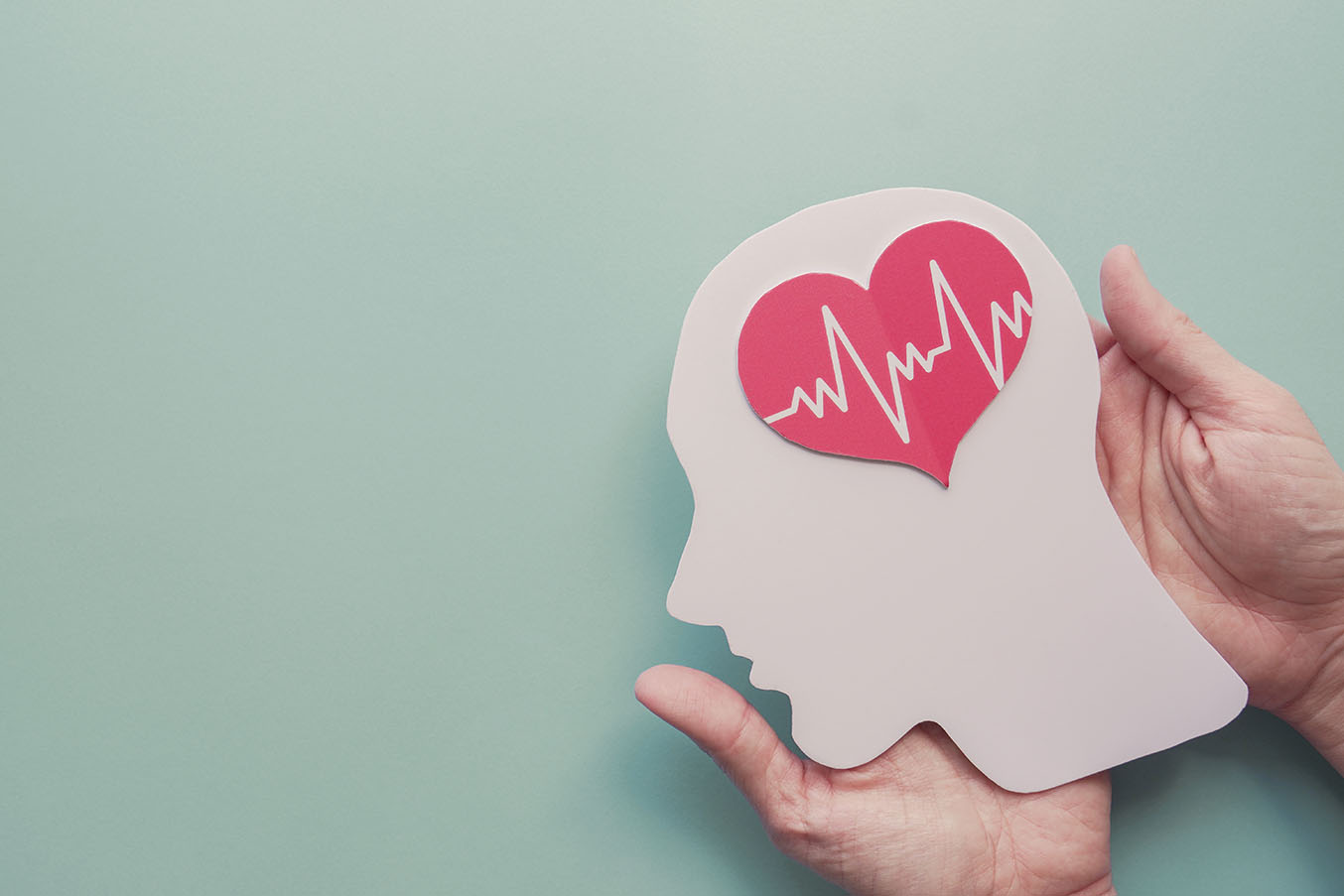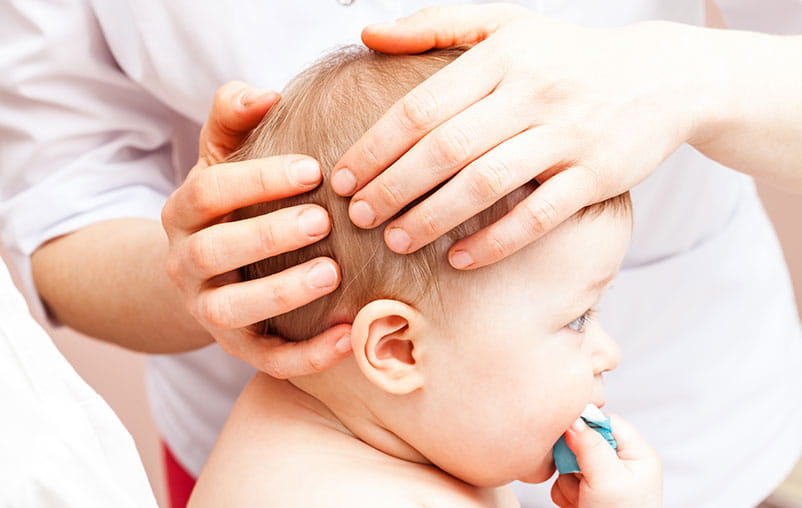Migraines and headaches are common, even in children. Though they can be painful, they are normally not a sign of a serious problem. Learn about different types of migraines, how to identify migraine triggers and when your child may need brain imaging or further medical testing.
Child and Adolescent Migraine Symptoms
Migraines in children and adolescents usually last between 1-48 hours and include at least two of the following:
- Pain on either side or both sides of the head or on the front of the head
- Pulsating or throbbing sensation
- Moderate to severe pain
- Aggravated by movement
- Nausea and/or vomiting
- Sensitivity to light and/or sound
Child and Adolescent Migraine Types
There are different types of migraines. Knowing how to distinguish which one your child is experiencing can help you determine how to help them manage it, and if you need to consult their pediatrician.
Classic Migraine
Classic migraines occur with an aura. Auras develop 5-20 minutes before onset of migraine.
Auras include vision changes that can look like shimmering lights, lights surrounding a blind spot, zigzags or flashing lights.
Classic migraine symptoms:
- Usually stop within one hour
- Accompanied by numbness, burning or tingling sensation
- Weakness in part of the body
- Problems with speech
Common Migraine
Common migraines are not accompanied by auras. They can last anywhere from four hours to three days, if left untreated.
They generally include at least two of the following symptoms:
- Moderate to severe pain on one side of the head
- Pulsating or throbbing sensation
- Nausea
- Sensitivity to light and sound
Physical activity tends to worsen these types of migraines.
Basilar Artery Migraines
These types of migraines affect more adolescent girls than boys. They can cause double vision and make it hard to move around. Your pediatrician may need to conduct testing to rule out other neurological conditions.
Basilar artery migraines may cause these symptoms:
- Headache in the back of the head
- Nausea, vomiting and/or ringing in the ears
- Difficulty walking and/or talking
- Difficulty moving body parts
- Altered consciousness
- May require imaging to rule out other conditions
- Symptoms clear in 1-3 hours
- Usually transform into more typical migraines
Complicated Migraine
Complicated migraines are uncommon but may increase your child’s risk for stroke in the future. Most require further evaluation or testing, especially if your teen is on oral contraception, smokes tobacco products or has a family history of stroke or vascular disease.
Does My Child Need Brain Imaging for a Migraine?
Oftentimes, your child will not need any further evaluation or testing for a migraine. Your medical provider may order imaging of your child’s brain if your child experiences:
- Clear escalation of headache severity
- Severe, sudden symptoms
- Change in quality of the headache
- Specific changes in vision
Your child’s provider may also order imaging if there is significant concern for a tumor or if they detected abnormalities during a neurologic exam.
Types of Brain Imaging
CT Scan
Also called a “cat scan” this type of scan involves radiation. Because of this, it is not recommended to get many CT scans within a short period of time.
A doctor may recommend a CT scan if your child’s symptoms have rapidly progressed. They may also be used if your provider is concerned a tumor is present. In that case, an immediate diagnosis would be helpful.
MRI (Magnetic Resonance Imaging)
Radiation is not used in MRIs, so there is no concern with repeat scans. MRIs provide more detailed images than CT scans, but the wait time is usually longer, and your child will stay in the scanner for longer than during the CT scan.
An MRI scan provides better imagery of the anatomy of the brain and can identify small or large tumors. It can also show blood vessels in detail.
Migraine and Headache Triggers
Many people over time and with careful observation can find specific things that seem to lead to the development of a headache. Avoiding those “triggers” can also help avoid the headache.
Triggers tend to be specific to each person. What triggers one kid may not trigger another. For example, certain cheeses or scents might lead to migraine in one child, but not another.
Common Migraine Triggers in Children and Adolescents
- Acute withdrawal from caffeine
- Change in barometric pressure
- Change in sleep patterns
- Decrease in estrogen in menstrual cycle
- Dehydration
- Odors
- Skipping meals
- Specific foods
- Stress
- Too much caffeine
Common Food Triggers
- MSG (monosodium glutamate)
- Commonly used in soy-based foods
- Processed foods
- TV dinners, ramen noodles, lunch meats and hot dogs/sausages (contain nitrates)
- Cheese
- Some cheeses contain an amino acid called tyramine, which triggers migraines
- Blue, cheddar, Swiss, mozzarella and parmesan cheese contain high levels of tyramine and may trigger migraines
- Cottage and American cheese are usually not triggers
- Aspartame/artificial sweetener
- Commonly found in diet sodas or other foods marketed as “low calorie”
How Caffeine Affects Headaches
Small amounts of caffeine can be helpful for treating headaches (it is an ingredient in Excedrin). However, overdoing it can have the opposite effect and might trigger a headache.
Doctors recommend consuming no more than 200mg of caffeine a day. That is about three shots of espresso or two cups of brewed coffee.
Caffeine withdrawal can also lead to headaches, so if your child or teen wants to cut back, they should not quit immediately.
Lifestyle Modifications to Prevent Migraines
Your child can work on identifying triggers by keeping a diary. When they get a migraine, they should note:
- Changes in weather
- Possible stress
- Foods eaten that day
- Missed meals
- Changes in sleep patterns
- Specific time during menstrual cycle
Once your child has identified their triggers, they can try to avoid them. Other tips to reduce their risk for migraines are:
- Get regular sleep
- Eat three meals daily and snacks
- Avoid processed foods and food triggers
- Stay hydrated
- Get regular, moderate exercise
- Avoid excessive caffeine intake
Pediatric Primary Care at University Health
No one should suffer from migraines. Doctors can help you and your child manage the condition. Medications may be needed or specific lifestyle changes. If your child is suffering from headaches or migraines, contact your primary care doctor to get help.





